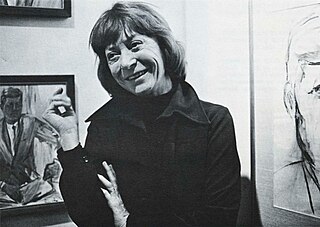
Elaine Marie Catherine de Kooning was an Abstract Expressionist and Figurative Expressionist painter in the post-World War II era. She wrote extensively on the art of the period and was an editorial associate for Art News magazine.
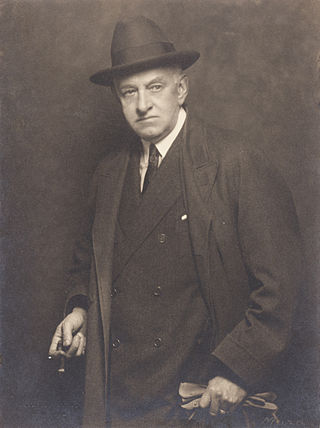
Willard Leroy Metcalf was an American painter born in Lowell, Massachusetts. He studied at the School of the Museum of Fine Arts, Boston, and later attended Académie Julian, Paris. After early figure-painting and illustration, he became prominent as a landscape painter. He was one of the Ten American Painters who in 1897 seceded from the Society of American Artists. For some years he was an instructor in the Women's Art School, Cooper Union, New York, and in the Art Students League, New York. In 1893 he became a member of the American Watercolor Society, New York. Generally associated with American Impressionism, he is also remembered for his New England landscapes and involvement with the Old Lyme Art Colony at Old Lyme, Connecticut and his influential years at the Cornish Art Colony.

Lilla Cabot Perry was an American artist who worked in the American Impressionist style, rendering portraits and landscapes in the free form manner of her mentor, Claude Monet. Perry was an early advocate of the French Impressionist style and contributed to its reception in the United States. Perry's early work was shaped by her exposure to the Boston School of artists and her travels in Europe and Japan. She was also greatly influenced by Ralph Waldo Emerson's philosophies and her friendship with Camille Pissarro. Although it was not until the age of thirty-six that Perry received formal training, her work with artists of the Impressionist, Realist, Symbolist, and German Social Realist movements greatly affected the style of her oeuvre.
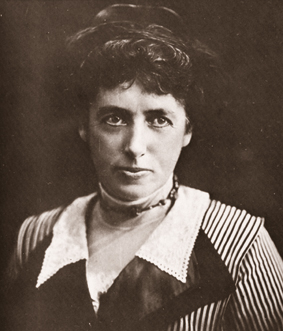
Frances Mary Hodgkins was a New Zealand painter chiefly of landscape and still life, and for a short period was a designer of textiles. She was born and raised in New Zealand, but spent most of her working life in England. She is considered one of New Zealand's most prestigious and influential painters, although it is the work from her life in Europe, rather than her home country, on which her reputation rests.

Jane Peterson (1876–1965) was an American Impressionist and Expressionist painter. Her works use broad swaths of vibrant colors to combine an interest in light and in the depiction of spontaneous moments. She painted still lives, beach scenes along the Massachusetts coast, and scenes from her extensive travels. Her works are housed in museums such as the Metropolitan Museum of Art, the Museum of the City of New York, the National Museum of Women in the Arts and the Hirshhorn Museum in Washington D.C., and the Pennsylvania Academy of the Fine Arts and the Philadelphia Museum of Art in Philadelphia, Pennsylvania. She was a fellow of the National Academy of Design and taught at the Art Students League from 1913–1919. During her lifetime, Peterson was featured in more than 80 one-woman exhibitions.
Eda Nemoede Casterton was an American painter known specifically for her portrait miniatures in watercolor, pastels and oil. She exhibited works at the Paris Salon and the San Francisco Panama–Pacific International Exposition of 1915, among others. Her works are at the Smithsonian American Art Museum and the Brooklyn Museum.

Elizabeth Nourse was a realist-style genre, portrait, and landscape painter born in Mt. Healthy, Ohio, in the Cincinnati area. She also worked in decorative painting and sculpture. Described by her contemporaries as "the first woman painter of America" and "the dean of American woman painters in France and one of the most eminent contemporary artists of her sex," Nourse was the first American woman to be voted into the Société Nationale des Beaux-Arts. She also had the honor of having one of her paintings purchased by the French government and included in the Luxembourg Museum's permanent collection. Nourse's style was described by Los Angeles critic Henry J. Seldis as a "forerunner of social realist painting." Some of Nourse's works are displayed at the Cincinnati Art Museum.

Mary Fairchild MacMonnies Low (1858–1946), born in New Haven, Connecticut was an American painter who specialized in landscapes, genre paintings, and portraits.
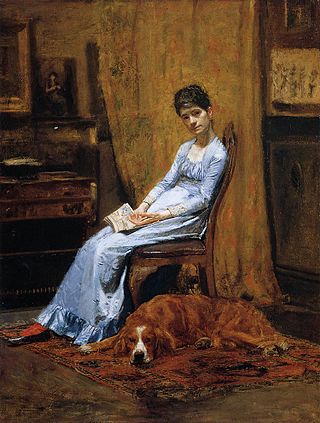
Susan Hannah Eakins was an American painter and photographer. Her works were first shown at the Pennsylvania Academy of the Fine Arts, where she was a student. She won the Mary Smith Prize there in 1879 and the Charles Toppan prize in 1882.
Nan Phelps, was an American folk artist from London, Kentucky. Phelps’ work has often been compared to that of the more famous Grandma Moses in both style and subject matter.

Jennie Augusta Brownscombe was an American painter, designer, etcher, commercial artist, and illustrator. Brownscombe studied art for years in the United States and in Paris. She was a founding member, student and teacher at the Art Students League of New York. She made genre paintings, including revolutionary and colonial American history, most notably The First Thanksgiving held at Pilgrim Hall in Plymouth, Massachusetts. She sold the reproduction rights to more than 100 paintings, and images of her work have appeared on prints, calendars and greeting cards. Her works are in many public collections and museums. In 1899 she was described by New York World as "one of America's best artists."
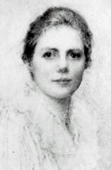
Lucia Fairchild Fuller was an American painter and member of the New Hampshire Cornish Art Colony. She was inspired to pursue art by John Singer Sargent. Fuller created a mural entitled TheWomen of Plymouth for the Woman's Building at the World's Columbian Exposition in Chicago in 1893. Best known for her portrait miniatures, she was a founding member and treasurer of the American Society of Miniature Painters.
Eleanor Ingersoll Maurice (1901–1995) was an abstract and realist painter. Her media included oil, watercolor, pencil drawings, and collages.

George Henry Hall (1825–1913) was an American still-life and landscape artist. He studied art in Düsseldorf and Paris and he worked and lived in New York City, the Catskills of New York and in Europe. His works are in museum collections in the United States and Europe. Over the course of his career he sold 1,659 paintings.

Samuel Addison Shute (1803–1836) and Ruth Whittier Shute (1803–1882) were a husband and wife team of itinerant portrait painters active in New England and New York State during the 1830s. Ruth Whittier Shute continued painting through the 1870s.

Joseph H. Davis was an itinerant American portrait painter. Over a period of only five years, from 1832 to 1837, he painted about 150 watercolor portraits of residents of Maine and New Hampshire. The body of work he left behind is highly regarded for its calligraphic line, miniaturizing delicacy, and decorative stylization. His pictures are in many important collections, including those of the American Folk Art Museum, the Metropolitan Museum of Art, the Museum of Fine Arts, Boston, the National Gallery of Art, the Terra Foundation for American Art and the Strawbery Banke museum in Portsmouth, New Hampshire.

Elizabeth Sparhawk-Jones was an American painter who lived in New York City, Philadelphia, and Paris, France. She had a successful career as a painter at the turn of the century, exhibiting her works internationally and winning awards. She had a mental breakdown that caused a break in her career, and she returned to have a successful second career, creating modern watercolor paintings. She was a resident at three artist colonies, with notable artists, writers, and musicians. Sparhawk-Jones' works are in American art museums, including the Art Institute of Chicago, Metropolitan Museum of Art, and Museum of Modern Art.

Laura Coombs Hills (1859–1952) was an American artist and illustrator who specialized in watercolor and pastel still life paintings, especially of flowers, and miniature portrait paintings on ivory. She became the first miniature painter elected to the Society of American Artists, and she was a founder of the American Society of Miniature Painters. She also worked as a designer and illustrated children's books for authors such as Kate Douglas Wiggin and Anna M. Pratt.
Emily Parker Groom (1876–1975) was an American artist born in Wayland, Massachusetts. She remained an active painter until the age of 97, spending nearly her entire career in Wisconsin, and died in Milwaukee, Wisconsin.
Folk art in the United States developed in the late 18th and early 19th centuries after the Revolutionary War when settlers revived artistic traditions from their home countries. Folk art includes artworks created by and for a large majority of people. It is defined by artistic expressions in a practical medium that has a specific purpose or continues a certain tradition important to a community of people. It includes hand crafted items such as tools, furniture and carvings, and traditional mediums such as oil paintings and tapestries which often served dual purposes, such as for the protection of a surface.















